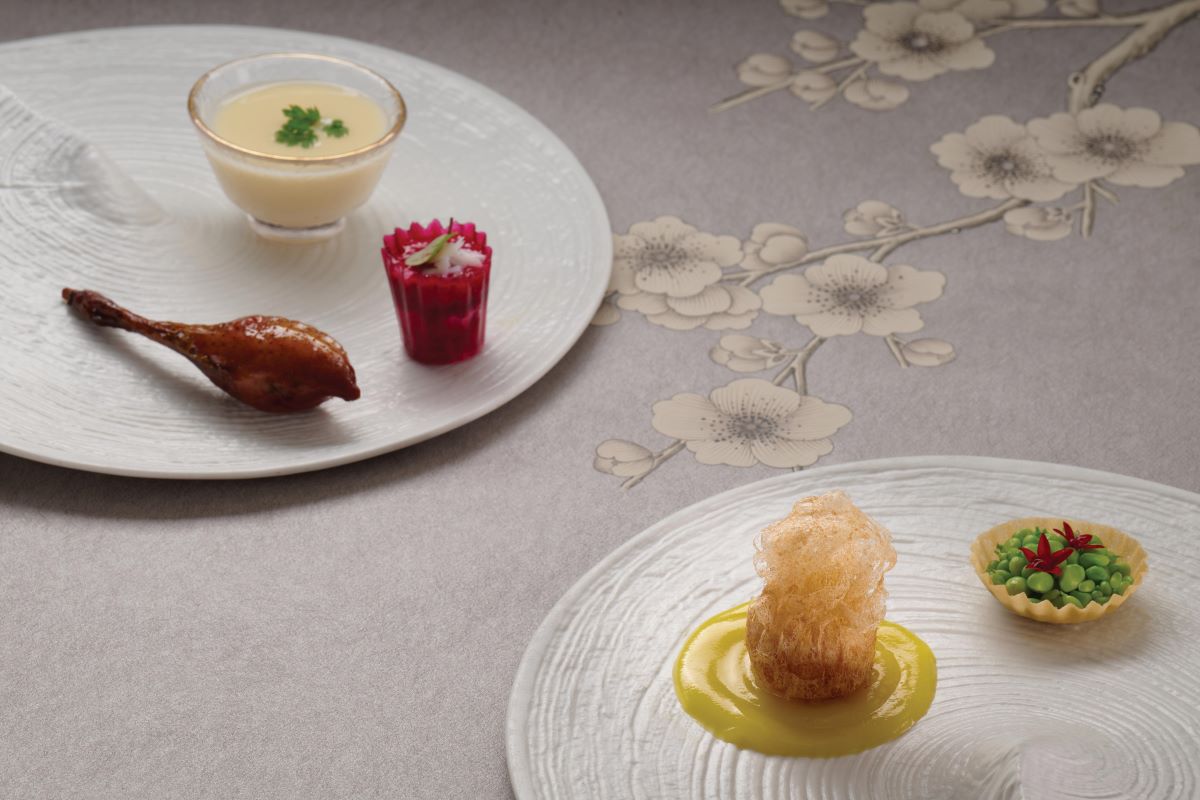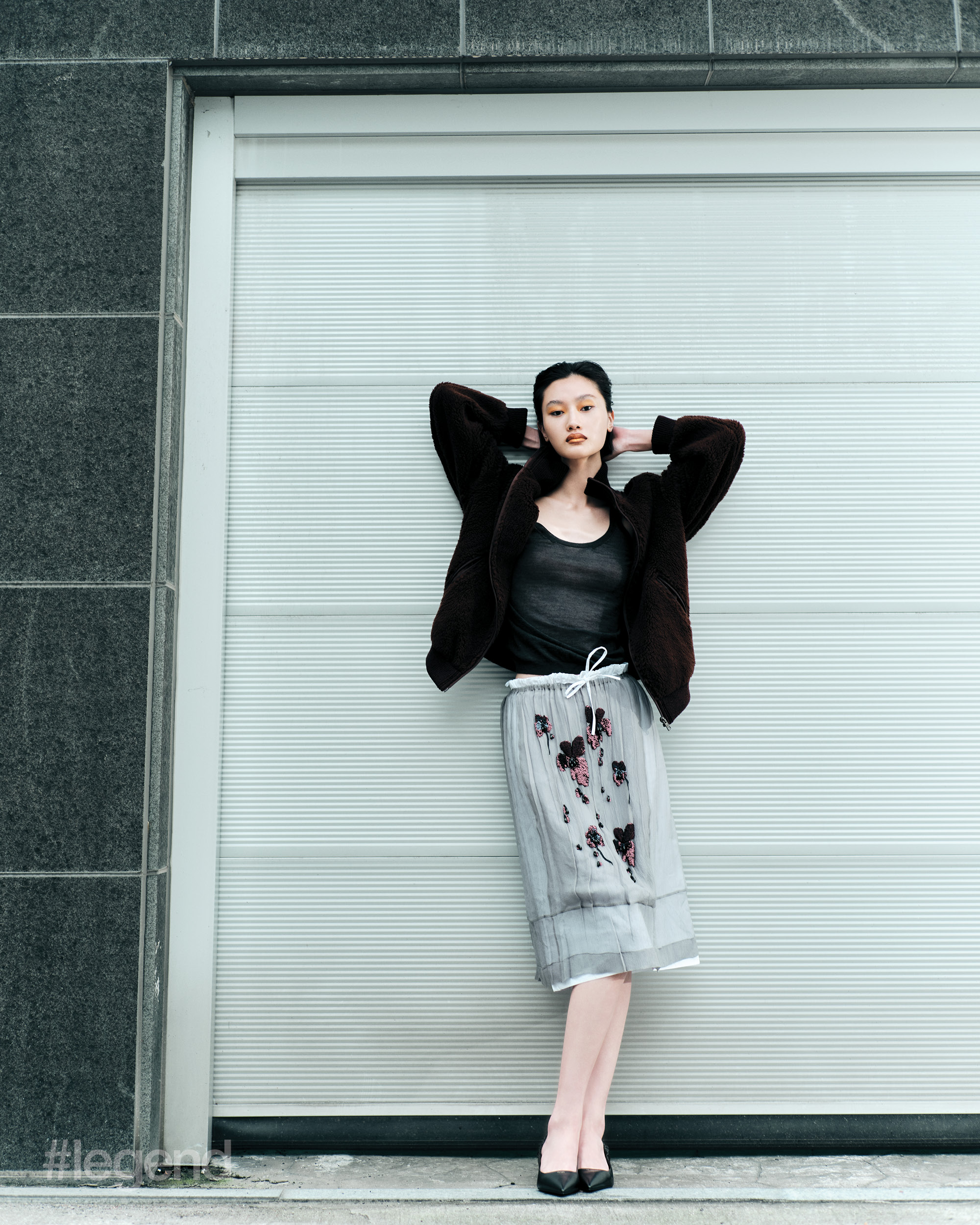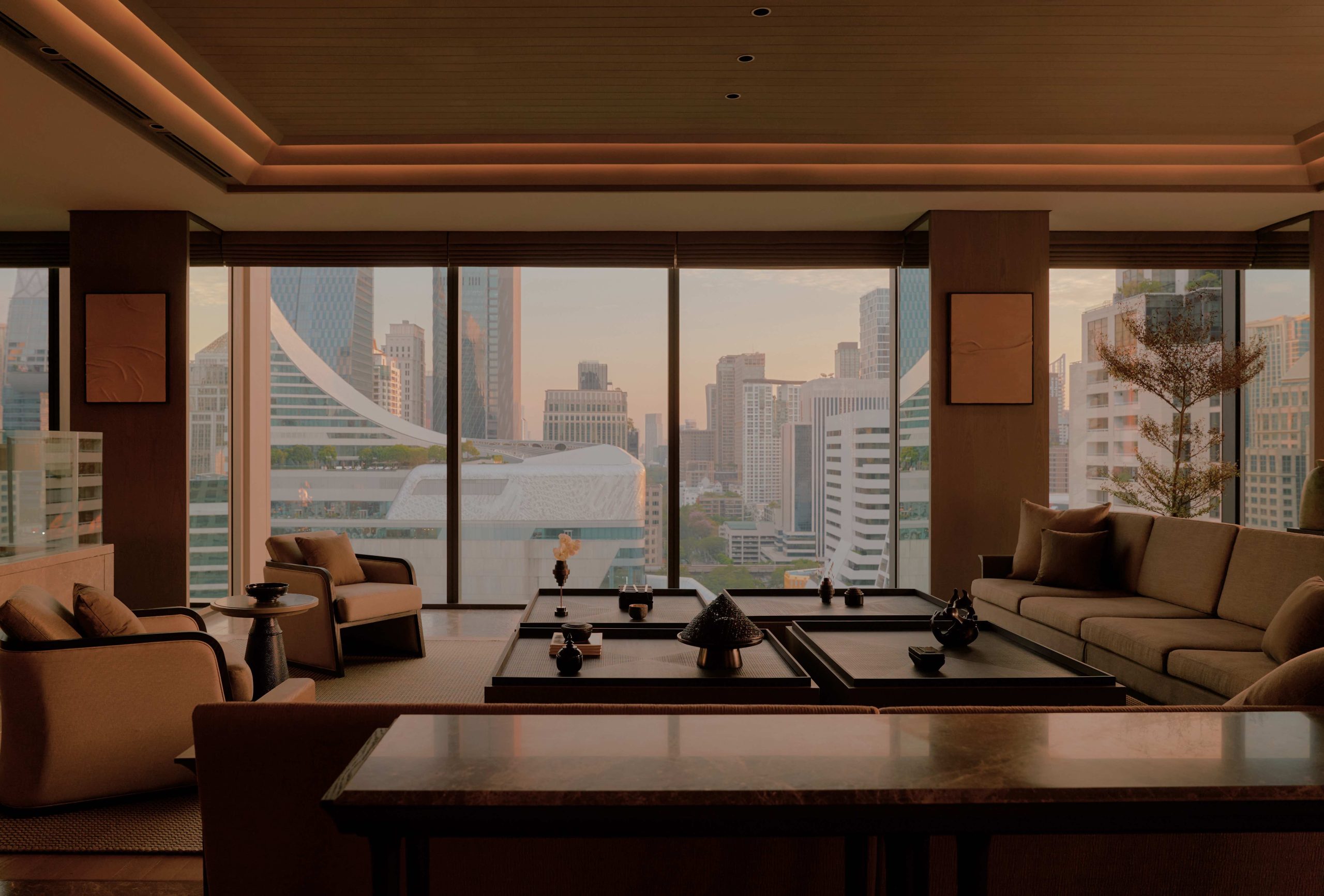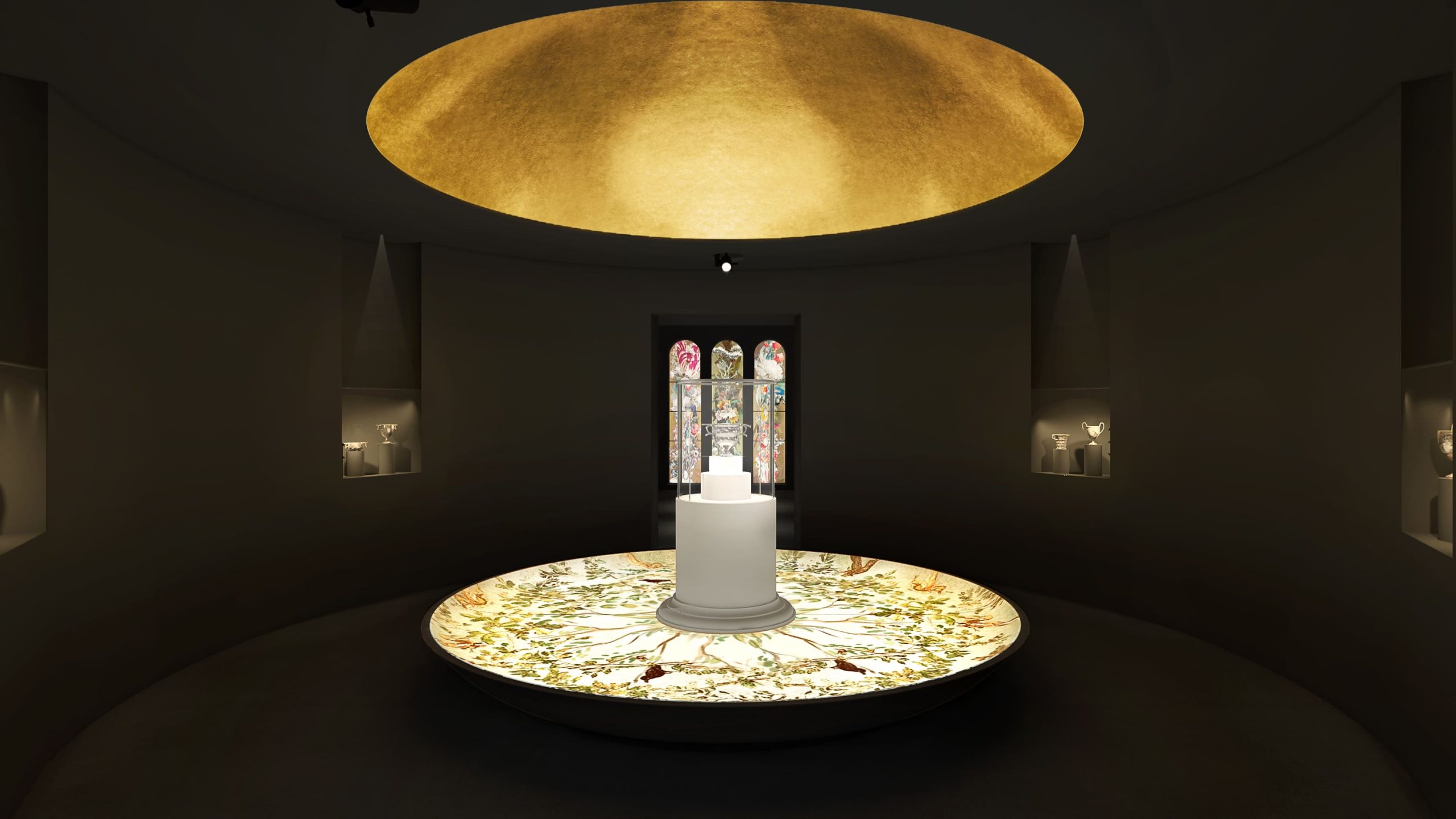German artist Gregor Hildebrandt captures a passion for music and film in a unique conceptual style that blends cassette and VHS tapes with elements of symmetry and duality. He talks to #legend ahead of his latest exhibition at Perrotin Hong Kong
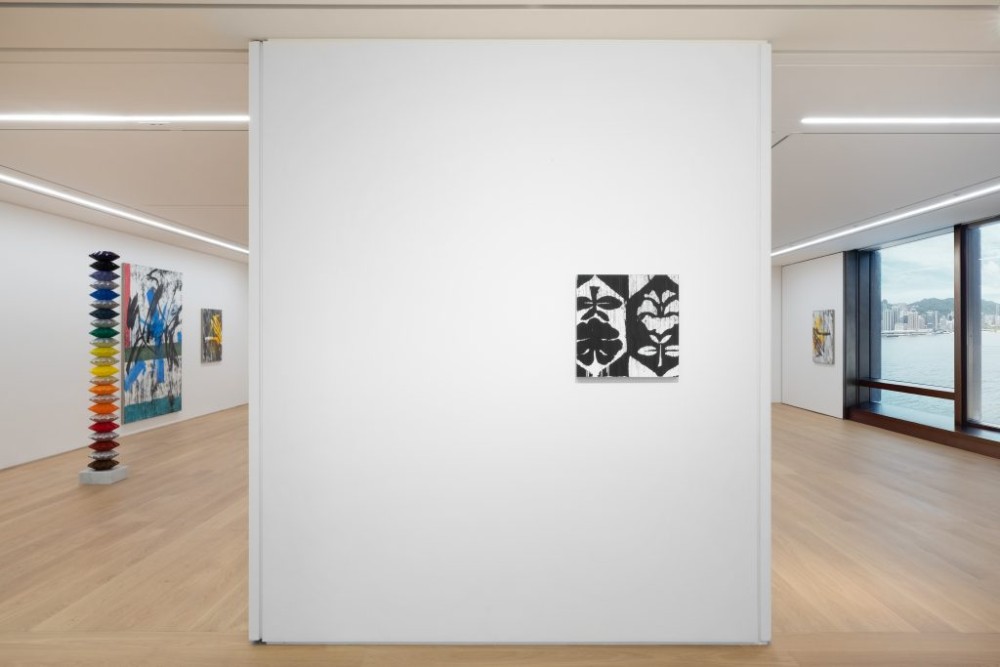
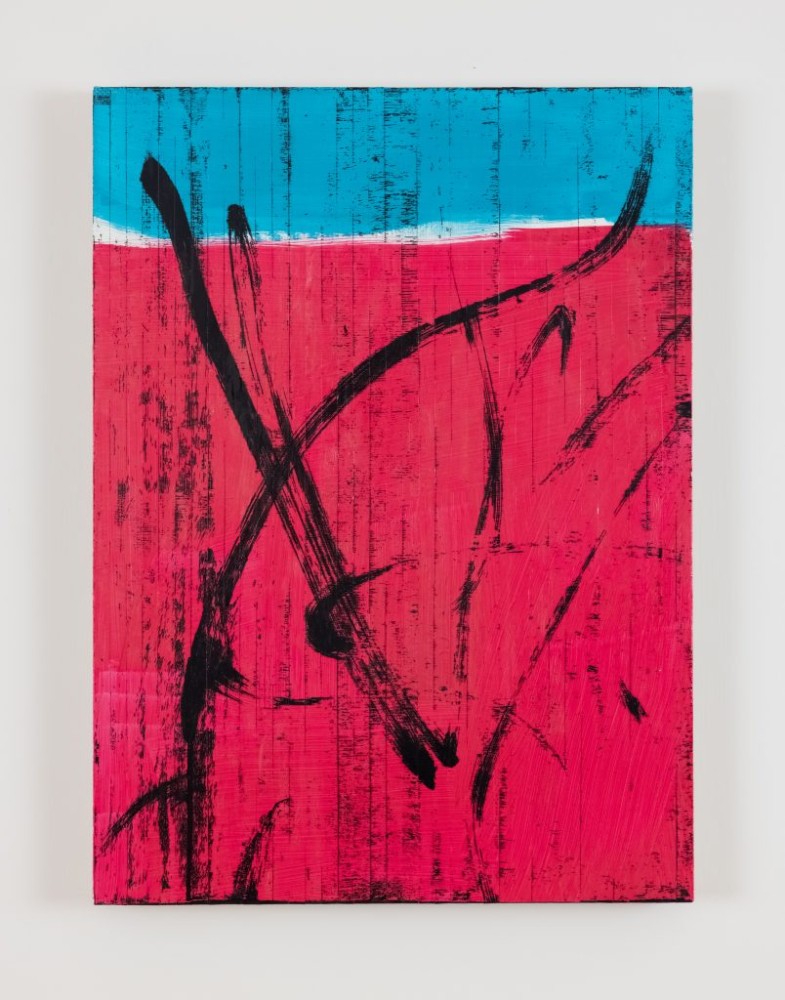
Fascinated by music’s immaterial state, German artist Gregor Hildebrandt has been expressing sound and compositions in their physical form since the late ’90s. His first foray was with the song “Falschgeld” by Einstürzende Neubauten, which was recorded on magnetic tape and plastered into his sketchbook. This practice eventually evolved into his signature “rip-off ” paintings that make use of repetitive collage structure on the medium of sound paper, or cassettes as we now know it, capturing not only music by his favourite singers but also pictures from films dear to him. This month, Hildebrandt’s works return to Perrotin Hong Kong for a second time with his solo
show Behind My Back, in Front of My Eyes.
Last January, Hildebrandt was on holiday in Hakone, Japan, when he became entranced by a napkin in a restaurant near Mount Fuji that inspired the statement piece of the exhibition, White flower pointing up (Alphaville), for which he used a cassette tape with the recording of the song “Big in Japan’’ by the German underground synth-pop band Alphaville.
The black-and-white painting plays with yin and yang compositions of a flower motif and employs a diptych structure that has long fascinated the artist. “I always have two separate positive and negative paintings that are symmetrical to each other but this [napkin-inspired piece] comprises both, which was maybe the reason why I liked it so much,” he says.
Also see: Curator Rossana Orlandi spreads message of sustainability with plastic
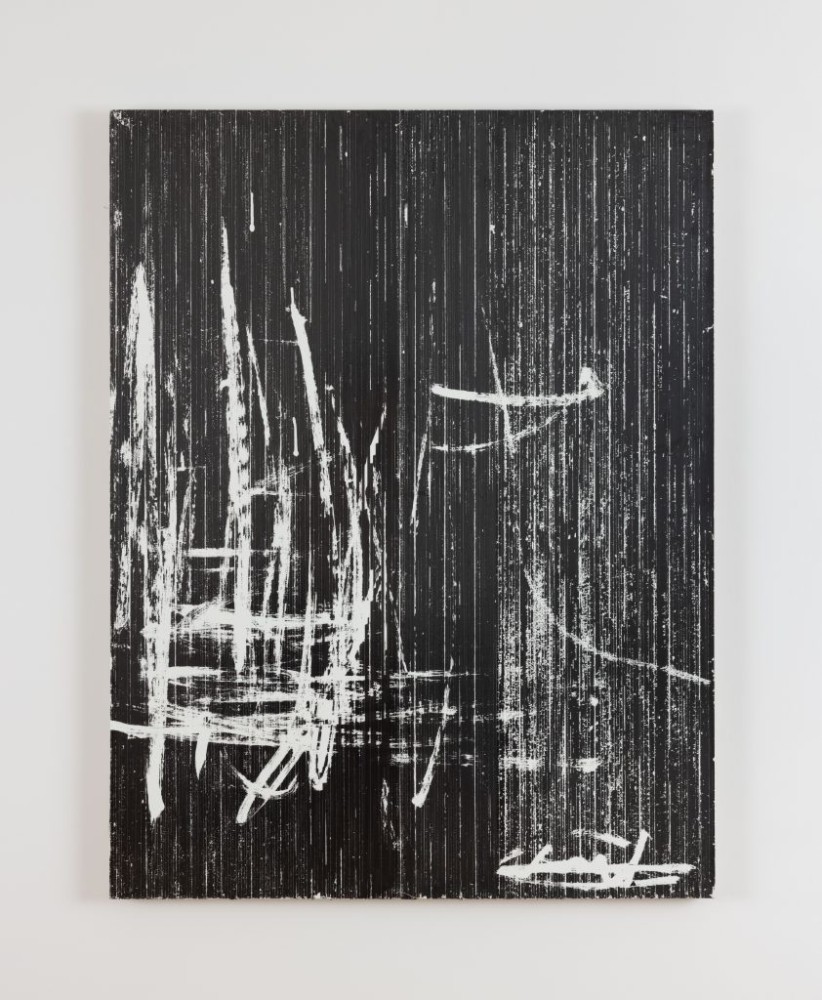
Black and white, yin and yang, positive and negative – the similar yet opposite principles Hildebrandt explores in his paintings connect back to the theme of the exhibition, the name of which was evoked by his off-site situation. “I can’t visit the exhibition physically so it’s, in a way, behind my back. But I see everything through FaceTime and pictures, [including] where the paintings were installed,” he explains.
Whether it’s his fondness for playing chess, which also follows a black-and-white colour scheme, or his exploration of parallel universes sparked by the mirror universe theory in the Star Trek episode “Mirror, Mirror”, Hildebrandt is not only passionate but particular about symmetry, as evident through the distinct mirror-like structured rooms in the gallery.
Defying the barriers of distance, the German-based artist details how he virtually immersed himself into the gallery space in Hong Kong. He took into consideration the specific angles and dimensions of the exhibition rooms and devised a meticulous plan for paintings to hang in a “yin-yang principle” in one room opposite to the other such that “all paintings are placed in the same way, back-to-back with the same distance [between them].”
Also profoundly conveying the concept of Behind My Back, in Front of My Eyes is the Woody Allen film-inspired piece The hands behind the back. Using an inkjet printing technique, Hildebrandt rendered the poster of the comedy drama You Will Meet a Tall Dark Stranger onto the labelled edges of cassette cases stacked into a wooden shelf, forming a grid-like structure.
He reveals the paintings dealt by the London gallerist, portrayed by Antonio Banderas, in the film were works of his former professor, Friedemann Hahn, whom he had studied under in Mainz. Beyond this personal connection, the German artist speaks of his love for the French painter Francis Picabia’s painting La Nuit espagnole that bears a slight resemblance to the poster with its depiction of the silhouette of a man and woman coloured in black and white.

Continuing the trip down memory lane, Hildebrandt reminisces about his childhood game of sgraffito in a series of coloured paintings that use acrylic glue rather than his primary style of adhesive tape. In sgraffito, different coloured crayons are first applied to a surface, then covered in black and scraped off with a knife to reveal the colours once again. Incorporating his own twist, the artist used black VHS tapes dubbed from films to mimic the wax crayon. Though an unprecedented method to Hildebrandt, the paintings evoke bittersweet nostalgia as he sentimentally recalls, “[making colourful paintings] was always my mother’s wish.”
When asked whether using the materials and mediums he is known for limits his creativity and imagination, the lover of cassette tapes is quick to affirm his enduring fascination with them. Whilst he admits that he doesn’t want to be seen as a “one-trick pony”, he still sees different ways to use cassette tapes.
On the topic of trying new things, Hildebrandt’s work was recently featured along with five other artists in Louis Vuitton’s Capucines Collection. Adorning the canvas of the bag is a print of the artist’s notorious rip-off painting and an unorthodox Louis Vuitton logo made from vinyl, a signature that he speaks proudly of. “For me it’s not a commercial thing. It’s also an outdoor art piece. Because when someone carries the bag on the street, I have an art
piece that is being exhibited outdoors,” he explains.
When it comes to his current projects, Hildebrandt reveals that he has just finished the opening for his latest installation das Segel – meaning “the sail” – made from tapes the Sunday prior. Positioned afloat a lake in Berlin, the piece is an extension of his previous sail installation The Black Concern for the Sail at the Sommer Contemporary Art Gallery in Tel Aviv, boosting the list of outdoor exhibitions by the artist.
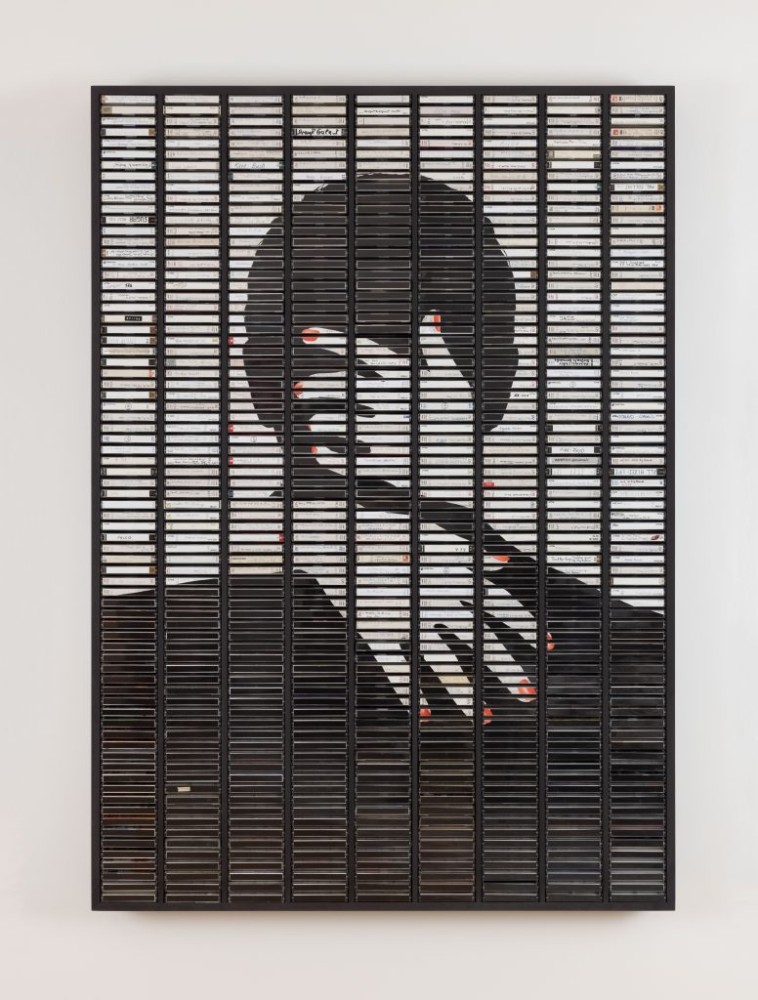
“I can’t visit the exhibition physically so it’s, in a way, behind my back. But I see everything through FaceTime and pictures” -Gregor Hildebrandt
Like his multidimensional perspective, Hildebrandt finds inspiration everywhere from paintings by German artists like Nobert Kricke, Frankfurter Quadriga and Karl Otto Götz to the music he listens to on repeat and movies he watches to random objects on the street. He also points to subconsciousness as another explanation for some of the complex connections between art and inspiration.
In addition to being influenced, the accomplished artist with a rich resume also plays the role of a professor. In doing so, Hildebrandt carries on the tradition of an exercise he learnt from his professor Hahn, who in turn had adapted it from his own professor Peter Dreher.
“Everybody has to paint in the beginning,” he says, “a white egg on a white plate on a white napkin. I had to do it myself as well.”
Whether it’s the combination of his use of a common material like vinyl and dynamic formulas or that of his love for analog media and the modern digital means to capture them during the materialisation process, Hildebrandt and his works are the epitome of duality. Referencing back to the way his paintings are hung, the artist hopes to incite a feeling that the end and beginning of the exhibitions are interchangeable.
He cites a poem by Stefan George, “‘Ich bin das feuer und das holz’ meaning ‘I am the fire and the wood, and I’m burning by myself’ is [an indication of] the end and beginning. [Such are] words I want to give to my audiences that instil a lasting impression on them even after they leave.”
Also see: 5 must-see highlights at Hong Kong’s new M+ museum


